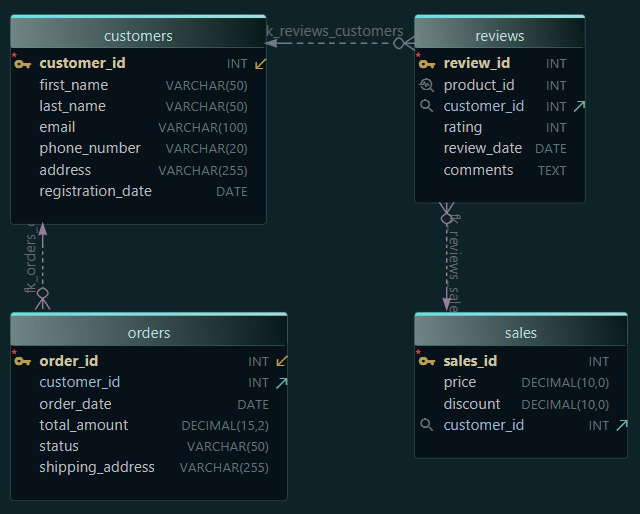SQL NULL Functions Explained with Examples
SQL, the backbone of many databases, often deals with data that may be absent or not yet available. Such data is represented by a special marker called NULL. This comprehensive guide is tailored to provide a deeper understanding of SQL's NULL functions and their applications.
Introduction to NULL in SQL
In SQL, NULL symbolizes the absence or unavailability of data. It's not equivalent to zero, an empty string, or any predetermined value. Instead, NULL uniquely marks that data is missing.
SQL NULL Functions: An Overview
SQL boasts a variety of functions to address NULL values. The most prominent among them are IFNULL(), ISNULL(), COALESCE(), and NVL(). Let's dissect each.
1. IFNULL() Function
Syntax:
IFNULL(expression1, expression2)
IFNULL() checks the first expression. If it's non-NULL, the function returns it; otherwise, it returns the second expression.
Example:
Consider the sample Students table:
| ID | Name | Age | Grade |
|---|---|---|---|
| 1 | Alice | 20 | NULL |
| 2 | Bob | NULL | B |
| 3 | Carol | 22 | C |
Query:
SELECT Name, IFNULL(Age, "Unknown") AS Age FROM Students;
Result:
| Name | Age |
|---|---|
| Alice | 20 |
| Bob | Unknown |
| Carol | 22 |
Explanation:
For Bob, since the Age is NULL, the function returns "Unknown".
2. ISNULL() Function
Syntax:
ISNULL(expression, replacement_value)
ISNULL() is akin to IFNULL(). It returns the first expression if it isn't NULL; otherwise, it provides the replacement value.
Example:
Query:
SELECT Name, ISNULL(Age, "Not Specified") AS Age FROM Students;
Result:
| Name | Age |
|---|---|
| Alice | 20 |
| Bob | Not Specified |
| Carol | 22 |
Explanation:
Here, Bob's age is NULL, so "Not Specified" is displayed.
3. COALESCE() Function
Syntax:
COALESCE(expression1, expression2, ...)
This function scans the list of expressions and returns the first non-NULL expression.
Example:
Query:
SELECT Name, COALESCE(Age, Grade, "Unknown") AS Detail FROM Students;
Result:
| Name | Detail |
|---|---|
| Alice | 20 |
| Bob | B |
| Carol | 22 |
Explanation:
For Bob, since the Age is NULL, the function moves to the next expression, Grade, and returns "B".
4. NVL() Function
Syntax:
NVL(expression1, expression2)
Specific to Oracle databases, it returns the first expression if it's non-NULL; else, it provides the second.
Counting NULL Values
To enumerate the NULL values in a column, combine COUNT() with IS NULL.
Example:
Query:
SELECT COUNT(*) FROM Students WHERE Age IS NULL;
Result:
| Count |
|---|
| 1 |
Explanation:
Only Bob has a NULL age, so the count is 1.
AVG() Function with NULL Values
When employing AVG(), SQL excludes NULL values, computing the average solely based on non-NULL entries.
Example:
Query:
SELECT AVG(Age) FROM Students;
Result:
| AVG(Age) |
|---|
| 21 |
Explanation:
Only Alice's and Carol's ages (20 and 22) are considered. Their average is 21.
Differentiating 'IS NULL' and '= NULL'
| Criteria | IS NULL | = NULL |
|---|---|---|
| Usage | Correct | Incorrect |
| Represents | Absence | Comparison |
| SQL Standard | Yes | No |
NULLs in String Concatenations
When concatenating a string with a NULL, the result is typically NULL.
Example:
Query:
SELECT Name, Age || ' years' AS AgeDetail FROM Students;
Result:
| Name | AgeDetail |
|---|---|
| Alice | 20 years |
| Bob | NULL |
| Carol | 22 years |
Explanation:
Bob's age is NULL, so the concatenated result is also NULL.
Common Pitfalls
- Equating
NULLto empty strings or zero. - Using
= NULLinstead ofIS NULL. - Neglecting that operations with
NULLyieldNULL.
FAQs
- Is
NULLa value?
No, it signifies the absence of a value. - Can
NULLparticipate in mathematical operations?
Yes, but the result remainsNULL. - How to default
NULLto another value?
UtilizeIFNULL(),ISNULL(),COALESCE(), orNVL().
Practice Exercises
- Identify students with a
NULLgrade. - Replace all
NULLgrades with "Not Assessed". - Compute the mean age, excluding
NULLvalues. - Merge the name and age of students, using "Unknown" for
NULLages.
Wrapping Up
Managing NULL values in SQL is paramount for precise data operations and analytics. By mastering these functions and methodologies, you'll be adept at handling unavailable or missing data in SQL.
Remember: A NULL in SQL isn't just a placeholder—it's a significant marker of data that's yet to be known.







